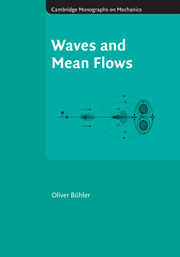13 - Wave-driven vortex dynamics on beaches
from Part III - Waves and Vortices
Published online by Cambridge University Press: 29 March 2010
Summary
The similarities and differences between zonal-mean theory and local averaging are illustrated nicely by the problem of wave-driven circulations in the nearshore regions on beaches. This problem is both significant in coastal oceanography as well as directly observable in everyday life, which is an attractive feature.
We first describe the classic theory of wave-driven longshore currents, which is based on zonal averaging and simple geometry, and then we consider the changes in the problem once localized wavetrains are allowed. This will lead to a discussion of vorticity generated by breaking waves and also to a consideration of vortex dynamics in a sloping domain, which are interesting fluid-dynamical topics in their own right.
We conclude with a consideration of how the long-term mean-flow behaviour may differ significantly from the predictions of classic theory in the presence of non-trivial topography features such as barred beaches.
Wave-driven longshore currents
The basic situation is as envisaged in the left panel of Figure 13.1: looking down on the xy-plane ocean waves are obliquely incident from the left on a beach with a straight shoreline located at x = 0, say. The waves are refracted and turned towards the shoreline by the decreasing water depth as the shoreline is approached. To fix terminology, the x-direction is called the crossshore direction and the y-direction is called the longshore direction. It is implicit in this picture that the flow is periodic in the longshore direction and that the wavetrain is homogeneous in y as well.
- Type
- Chapter
- Information
- Waves and Mean Flows , pp. 289 - 316Publisher: Cambridge University PressPrint publication year: 2009

